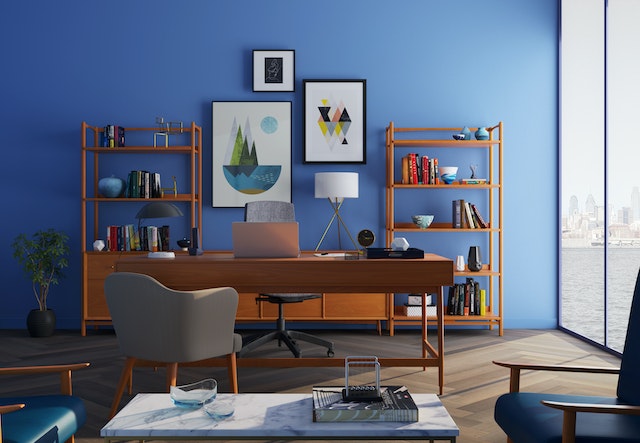Our blog explores furniture and home design! Choosing home furnishings may be thrilling yet intimidating. With so many styles, colours, and materials, it’s easy to become lost. Fear not! We’ll help you make informed selections to turn your home into a comfortable and stylish oasis. Sit back, get a coffee, and let’s discuss how to choose the right furnishings for your dream home!
How to choose home furniture
Start with a plan when buying home furniture. Assess your needs and preferences before shopping. Do you want modern and minimalist or classic and elegant? Consider how each space will be used and how the furniture will fit in.Measure your space. Before buying, you need proper room dimensions. This will help you choose furniture sizes for each space. Consider doors and hallways while carrying bulky objects into your home.
Budget for quality and finances. Stick to your furniture budget. Remember that higher-quality things last longer and save money. Consider furniture materials. Solid wood is popular for its durability and timeless charm. However, engineered wood or metal frames can be durable and affordable. Don’t rush! Explore your preferred styles, colors, patterns, and textures. Visit several businesses or online platforms for inspiration.Start with these steps to choose furniture that matches your home and your personality.
Furniture varieties
Home furnishings are limitless. Classic and modern styles are available for any taste. Let’s look at furniture options for constructing your dream home.
1. Sofas and chairs: These important pieces add comfort and charm to any living room. Choose a sofa or armchair that matches your home’s theme, whether it’s luxurious or modern.
2. Beds and Mattresses: Your bedroom should be a retreat after a long day. Buy a comfortable, supportive bed frame and mattress.
3. Tables: Coffee and dining tables are family meeting places. Choose a table that fits your room without crowding it.
4. Storage Units: Choose cabinets or bookshelves for organisation. These are functional and decorative.
5. Decorate with living room mirrors, artwork, rugs, and plants. These decorations give any area personality and cohesion.
Quality counts too while choosing furnishings! For long-term use, choose strong materials and structure.Mixing furniture styles can create an eclectic aesthetic or provide visual interest if done appropriately. (continues)
Choose high-quality dining room mirrors.
Dining room mirrors may instantly transform your environment. It gives the room depth and dimension and brightens it by reflecting light.How do you pick a dining room mirror? First, measure your dining room. A little mirror in a huge room may be lost, whereas a large mirror in a small room may overwhelm it. To achieve equilibrium, measure your walls and consider other furniture.
Style next. Designs range from modest to extravagant. Choose a mirror that matches your decor and style.Dining room mirror quality is also significant. Choose mirrors with robust wood or metal frames and high-quality glass. This prevents wear and warping.
Also consider functionality. Some living room mirrors have shelves or storage for dishes or decorations.Remember maintenance. Polished chrome or stainless steel are easy to clean and resist fingerprints and smudges on mirrors.
By carefully examining these factors—size, style, quality, usefulness, and maintenance—you’ll be able to find the ultimate dining room decoration: a magnificent mirror that both beautifies and functions!
Furniture selection tips
Choosing furniture for your home involves numerous significant considerations. Consider space size first. Too big or too small furniture can make a room feel crowded or empty.Functionality matters too. How will you use the furniture—for sitting, entertaining, or storage? This will help you choose parts for your needs.
Consider your desired space style and vibe. Do you like modern, minimalistic designs? Or a more traditional, ornate look? Knowing your style preferences will help you narrow down the possibilities and ensure design cohesion.
Selecting furniture should also prioritise quality. Quality components will last and provide comfort and functionality for years.Budget carefully. Before furniture buying, set a realistic budget so you can prioritise where to spend.
By considering size, utility, style, quality, and price, you may choose furniture that meets your practical and aesthetic demands.
Mixing furniture:
Mixing and matching furniture is a creative way to decorate. It lets you personalize your area and express your taste. Here are some furniture-mixing tips.First, determine your space’s theme. Whether modern, rustic, or eclectic, having a vision will assist you choose furniture.
Find common threads next. Colors, textures, shapes, and patterns can do this. For a coherent aesthetic, mix a vintage-inspired sofa with flowery upholstery with an antique wooden coffee table. Try different styles too. Contemporary and classic furniture can create an interesting space. Make sure they’re connected by color or texture.
Arrange furniture by size and proportion. Balance large and tiny elements for visual harmony. One component shouldn’t dominate or feel out of place. Consider space flow and functionality. Make sure the furniture fits and works well. Mixing and matching furniture expresses your ingenuity! Play around until you discover a combination you like.
Maintaining new furnishings
Maintaining new furniture ensures its longevity and keeps it looking new. Tips for maintaining new furniture:
1. Regular Cleaning: Dust and debris can accumulate on furniture, so clean it periodically. Dust with a soft cloth or hoover with a brush.
2. Avoid Direct Sunlight: Direct sunlight fades and damages furniture fabric and wood. Use drapes or shades to shield furnishings from direct sunlight.
3. Protect against Spills: Accidents happen, but wiping up spills on furniture quickly reduces damage. Blot the stain gently with a clean cloth. Rubbing may spread it.
4. Use Furniture Protectors: Coasters, placemats, and tablecloths under glasses and hot plates can avoid scratches and dents.
5. Proper Placement: Place furniture carefully in a room. Avoid heavy objects on fragile surfaces and leave room around each piece for easy moving.
6. Follow Manufacturer’s Instructions: Different materials demand different cleaning and maintenance techniques, so always consult the manufacturer.
7. Repair as Needed: Fix loose screws, shaky legs, and other furniture issues immediately before they get worse and harder to fix.
Follow these simple maintenance instructions to keep your new furniture in great condition for years to come!Consider style, functionality, quality, and affordability while buying furniture.





